The way flying consumes my life these days, you’d think I was born with a pair of goggles, leather jacket, and a long silk scarf. Alas, nothing could be further from the truth.
I grew up in Studio City, ironically not far from the Van Nuys Airport that I fly out of on a regular basis these days. But aside from a few childhood toys, aviation wasn’t on my radar much as a youngin’.
The one exception would be a memorable flight from Los Angeles to Missouri in 1977. My mother took me to visit the grandparents, and the trip to St. Louis was made via a shiny red and white TWA Boeing 727. It was the old days of air travel, before so-called “de-regulation”. I don’t know what the ticket cost. What I do know is that everyone dressed up, including yours truly in a little two-piece denim suit. The flight attendants provided a pair of pilots wings for my disco-worthy attire, and I was invited to visit the flight deck — in mid-flight, I might add. Imagine the response you’d get by asking to do that today!
After landing there was a miniature photo shoot in the cockpit with the flight engineer. Everyone was all smiles. I remember enough of the adventure to realize it was nothing like flying on a Part 121 air carrier today, even in first class.
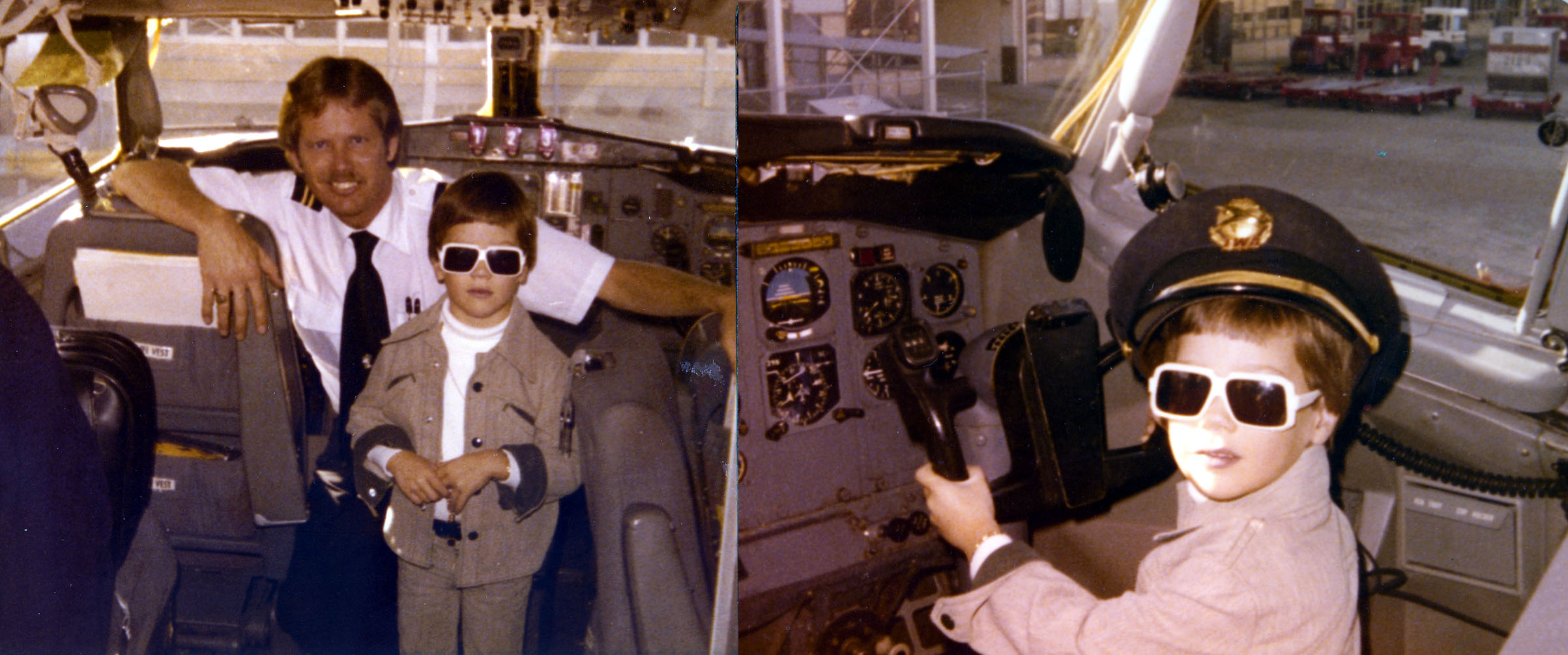
As I said though, apart from that trip, flying just didn’t figure into my life very much. It might have in later years, but my mother lost a quick battle to pneumonia on my 7th birthday and my father followed a couple of years later after a heart attack in October of ’82.
I miss them.
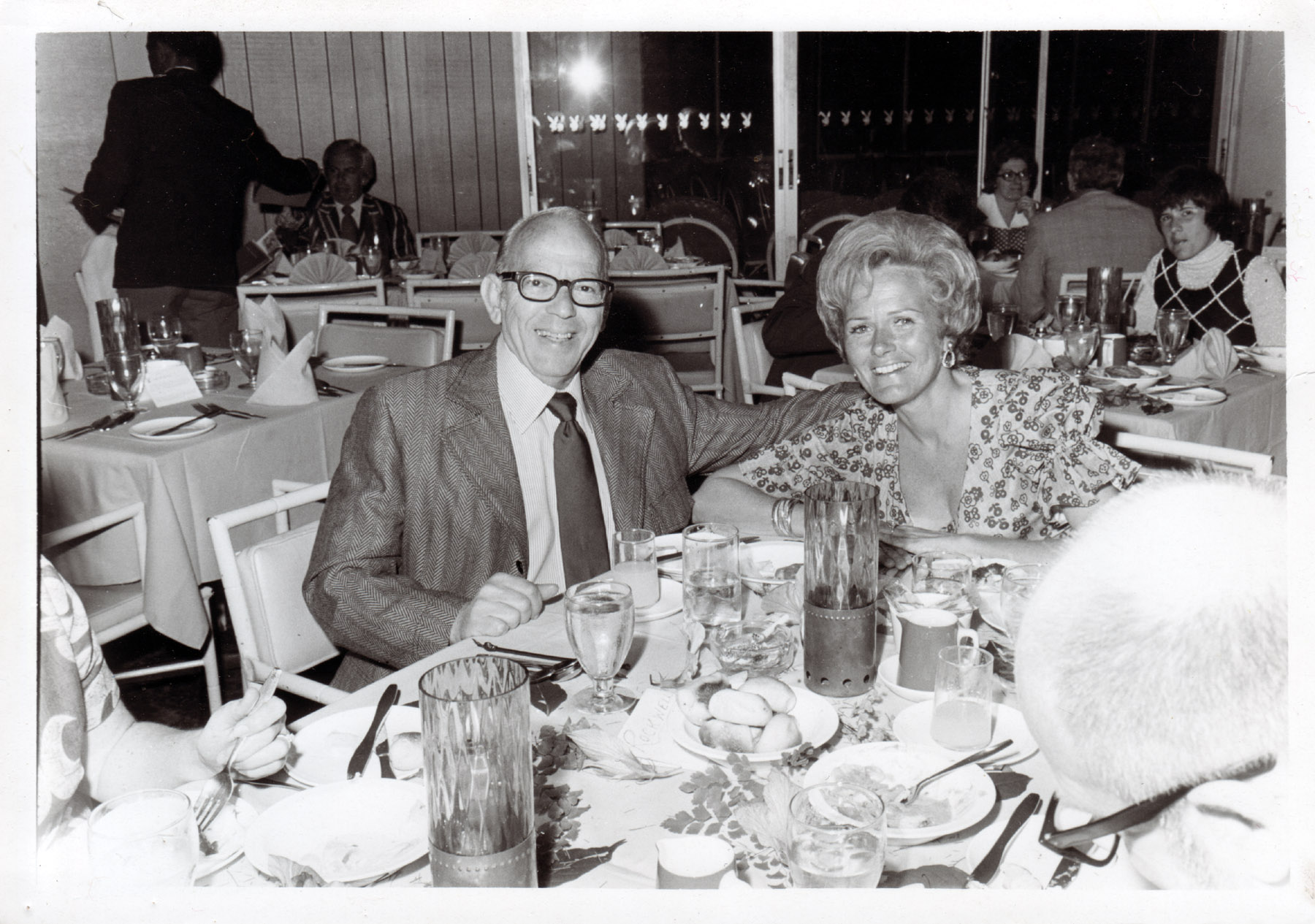
As you might imagine, those two events changed everything. By Thanksgiving that year, the perpetual summer of southern California had been exchanged for the little town of Eagle River in Alaska. I was living with my cousin David and his family. They had just moved there themselves, actually — he was hired by the FAA as a replacement Air Traffic Control Specialist after Reagan fired virtually the whole cadre in the PATCO strike.
It’s one of those strange twists of fate that brought me closer to aviation even as I was focused on more mundane things. The sixth grade, for example. Learning what “winter” meant. Making new friends. Rebuilding my life on what, to a 10 year old, seemed like another planet.
David was an instrument-rated GA pilot, but as I recall he didn’t fly much. After completing his initial training in Oklahoma City, he’d been assigned to the Anchorage Air Route Traffic Control Center (ARTCC). Being the low man on the totem pole, he often worked the graveyard shift.
Things at Anchorage Center were rather lively in those days, as the strike mess had left the Center extremely short staffed. And I was a curious kid, so one day David took me to see the place and before I knew it, they put me to work as a “runner” in the Flight Data section. Flight Data was an area where computers and industrial-sized dot-matrix printers would churn out the paper flight progress strips that controllers used to track each aircraft. I learned how to detach the strips, put them in the plastic holder, and then take them to the appropriate controller.
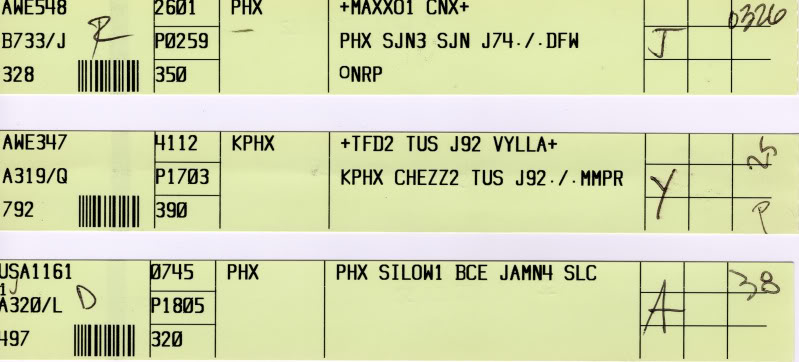
When I think back on those days, I’m amazed. The early 80’s were the height of the Cold War, and Anchorage Center was (is?) located on Elmendorf Air Force Base, very much a front-line facility within easy strike range of the Soviet Union. But there I was, a ten-year-old kid wandering around a major air traffic control center with no supervision. Today, I’d probably get arrested or shot for the simple act of loitering in the employee parking lot.
But back then? Nah. I never thought anything of it. It seemed completely natural. The controllers showed me how to read the flight progress strips, explained the data block on the radar screen, and even showed me how the entire airspace was organized. They’d let me sit in and listen as they worked, and would even have me watch an empty sector (remember, they were understaffed!) so I could call someone over to work the traffic if any appeared on the screen.
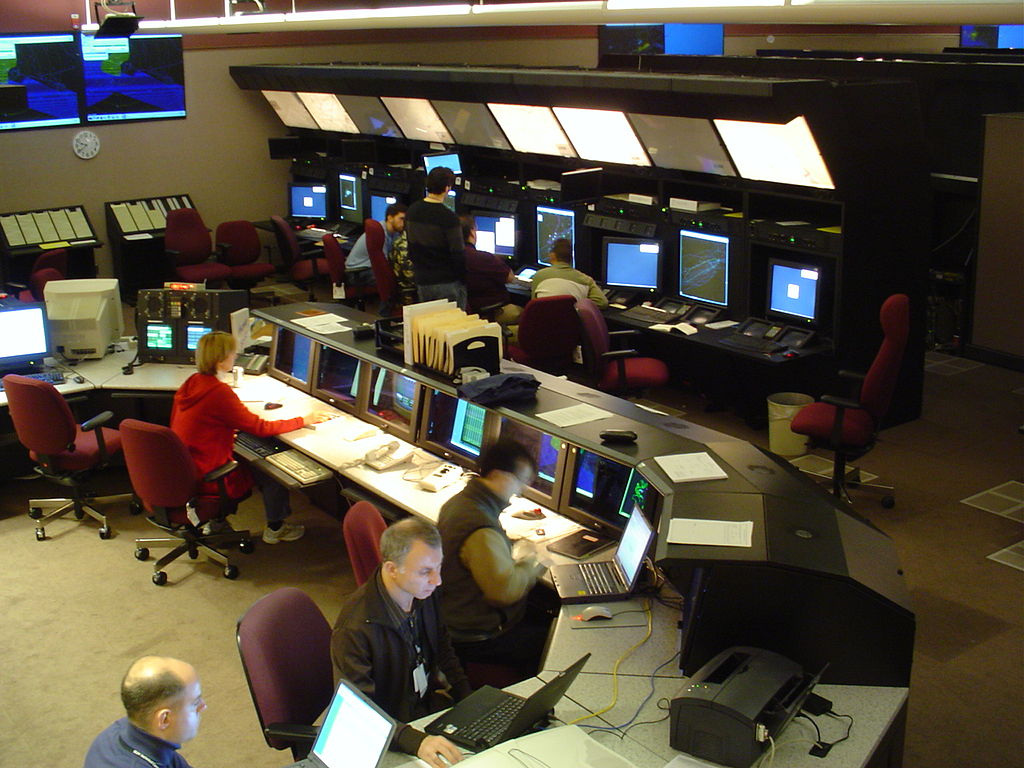
It was during those years that I got my first exposure to Saturday Night Live, MTV and Friday Night Videos by watching them in the break room. It was also when the Soviets shot down a fully loaded Korean Airlines 747 after it wandered into their airspace. Like I said — the Cold War. As I recall Anchorage had just handed the flight off to Tokyo Center.
Anyway, as a newbie, David was still undergoing training as he worked toward FPL (“Full Performance Level”) status. It took several years of on-the-job training to reach that point. You’d start on the data side, and then learn to work the radar end of things. His training required periodic tests, and as Gene Kranz said, failure was not an option. You’d be allowed a single re-test, which would result in one of two outcomes: pass or termination.
Unfortunately, he washed out of the program after a couple of years and we bid the 49th state goodbye shortly thereafter. In it’s place: Las Vegas, Nevada. Talk about freezer burn. Within a few years I’d gone from hot to cold and back to hot again.
By that time, I was focused on middle and high school, finally completing my own personal Bermuda Triangle when I returned to Southern California for college. During these years I wasn’t much involved in aviation, but in retrospect it had to have been somewhere in the back of my head, because shortly after graduating, the flying bug hit me faster than… well, than a bug hitting a flying machine.
It was 1998. I was driving down the street one day on the east side of John Wayne Airport for a reason I cannot recall (except to say it had absolutely nothing to do with aviation), and noticed a series of sky-blue awnings that said ‘Flight Training’.
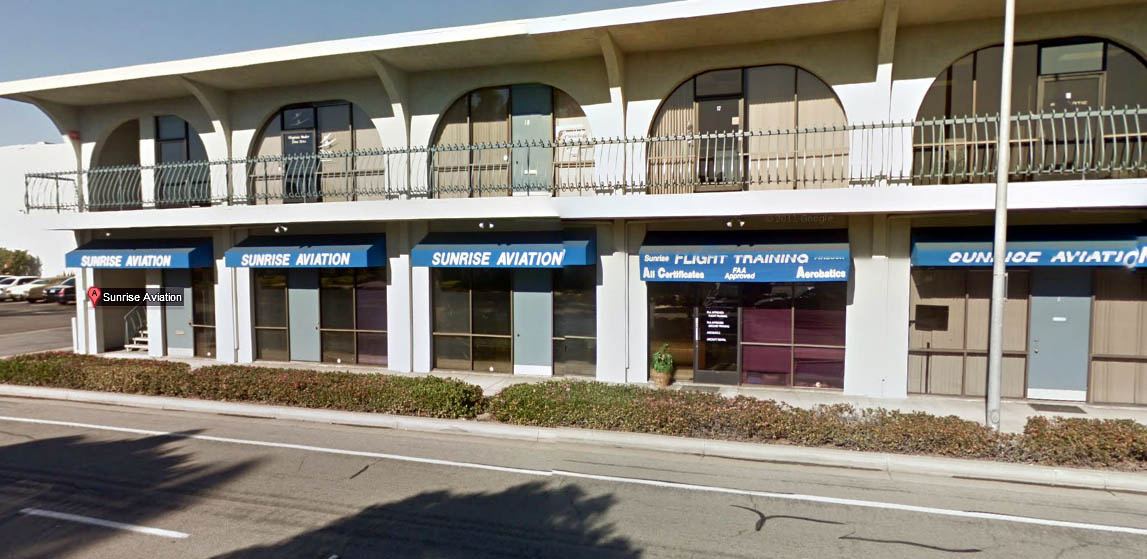
Sometime between where the awning started and where it ended, I made the decision that yes, I was going to do that. Not “that looks interesting” or “maybe I’ll check into it”. No, whatever clicked in my brain that day, by the time the car traveled the next hundred feet, it was a foregone conclusion that flying was the new focus.
It was almost as if this was something that had been on my to-do list for a long time and I’d simply forgotten about it. So I slammed on the brakes, left a ridiculously long skid mark on the street, and turned into the parking lot at Sunrise Aviation.
I never looked back.
Demo flight? Nah. Just get me some books and let’s start scheduling the training! I didn’t even look at any other FBOs. The place seemed clean and professional, so I checked that off the list and dove in with both feet. I wasn’t in a particular hurry, but started in late July and finished on Christmas Eve. And those five months included a long period when one of the two runways at SNA was closed for reconstruction. It’s just part of my personality to put laser-like focus on any task I undertake until it’s done. Either I do it or I don’t. There’s no halfway.
Looking back, it’s also clear that this was a rare and perfect time in life: I had a sufficient quantity of both time and money, something I didn’t fully appreciate until I began instructing and saw the struggles many aspiring pilots had in one or both of those arenas.
It was also an era when things were significantly cheaper. This was only fifteen years ago, avgas was about $2.60 a gallon. The Skyhawk cost $66 an hour (including fuel) and instructors were $29 per hour. Today that same airplane at the same FBO is $164 and the CFI is $70.
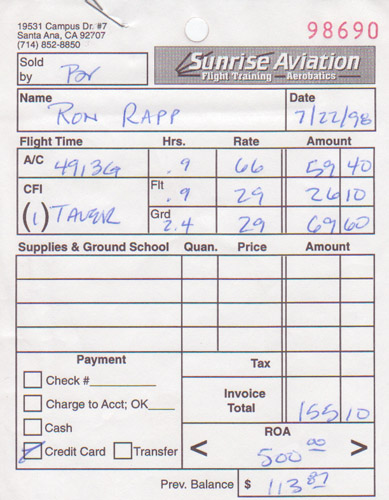
So now I was a pilot. And I did what many of us do after primary training: looked around and said, “What now?” Well fate had an answer for me. You see, after completing the private, Sunrise provides a “free” hour of aerobatics as a little thank you. Brilliant marketing on their part, as it turned out to be the most expensive hour I’ve ever flown. A few weeks later I had finished a tailwheel endorsement and aerobatic program, and for about six months thereafter I took everyone who would say “yes” up for an aerobatic ride, giving them loops, rolls, spins, Cubans, Immelmans, barrel rolls, and more.
Then came the Skylane, which I bought for instrument and commercial training, later using it for the many Angel Flights I’ve written about. By that time that was done, it was nearly 2004 and I started to notice that the cost of operating the Skylane had easily doubled from what I was paying just a few years earlier. The fuel, insurance, maintenance, and everything else was driving me into a financial hole. But what did I care? I was flying!
Okay, maybe I cared a little.
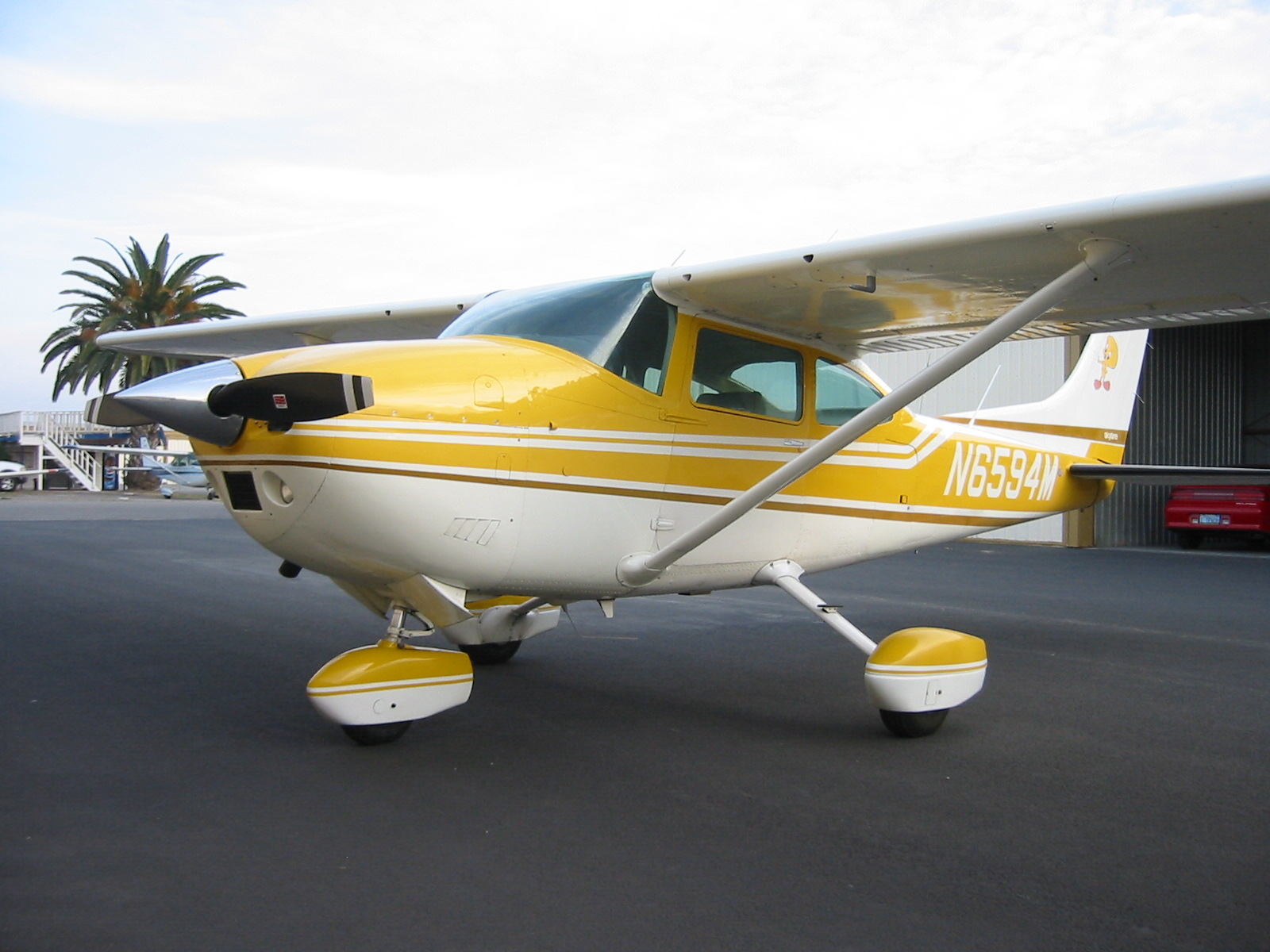
Truth be told, that was actually the fork in the road. To the left I saw a future of fewer hours in the air due to the cost. To the right was going to have to be something that would make flying affordable. But what?
I pondered this for quite a while. Winning the lottery was the preferred route. I suppose a World Series of Poker victory might have also sufficed. Alas, for reasons I’ll never understand, neither of those came to fruition. Lower down on the list of possibilities were things like selling a kidney… but only because those might have affected my medical certification. You get the idea, though: I was hooked. While I thought about the future, I got a seaplane rating on the Colorado River and my commercial glider rating at the now defunct Sailplane Enterprises in Hemet.
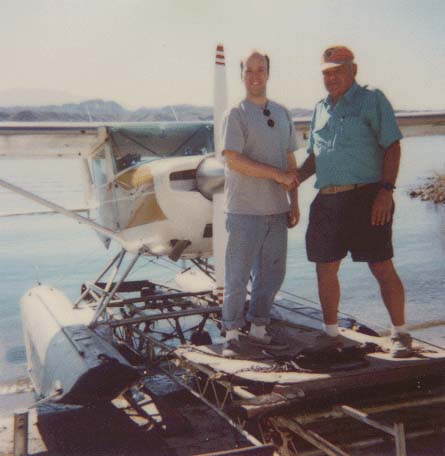
My day job had been working as an independent web developer, and nights were spent singing with a professional opera company. I’d started back in the earliest days of the World Wide Web, when knowing HTML meant you could name your own price and people would line up to pay it. But the business was changing, and the work I’d been doing was keeping me in front of a computer all day at my home office. So in an effort to fly more and get away from the solitary nature of working alone, I sold my beloved airplane and plunked down a pretty penny on ATP’s 14-Day CFI Program.
(I kept a day-by-day journal of that experience if you’re interested in reading about what it’s like obtaining a CFI, CFI-Instrument, and CFI-Multi in two weeks time.)
After that, I went back to Sunrise at a fortuitous time and was hired to teach there. The rest, as they say, is history. You meet a few people, fly a bunch of interesting airplanes, make some friends, and the next thing you know, you’re a 6,500 hour pilot with 100 aircraft types under your belt.
I’ve always felt that variety was the spice of life, and in aviation that philosophy has allowed me to do some very cool things. I just looked at the most recent page in my logbook, and it contains entries for a DiamondStar, Super Decathlon, King Air, Gulfstream IV, TwinStar, RV-6, and Pitts.
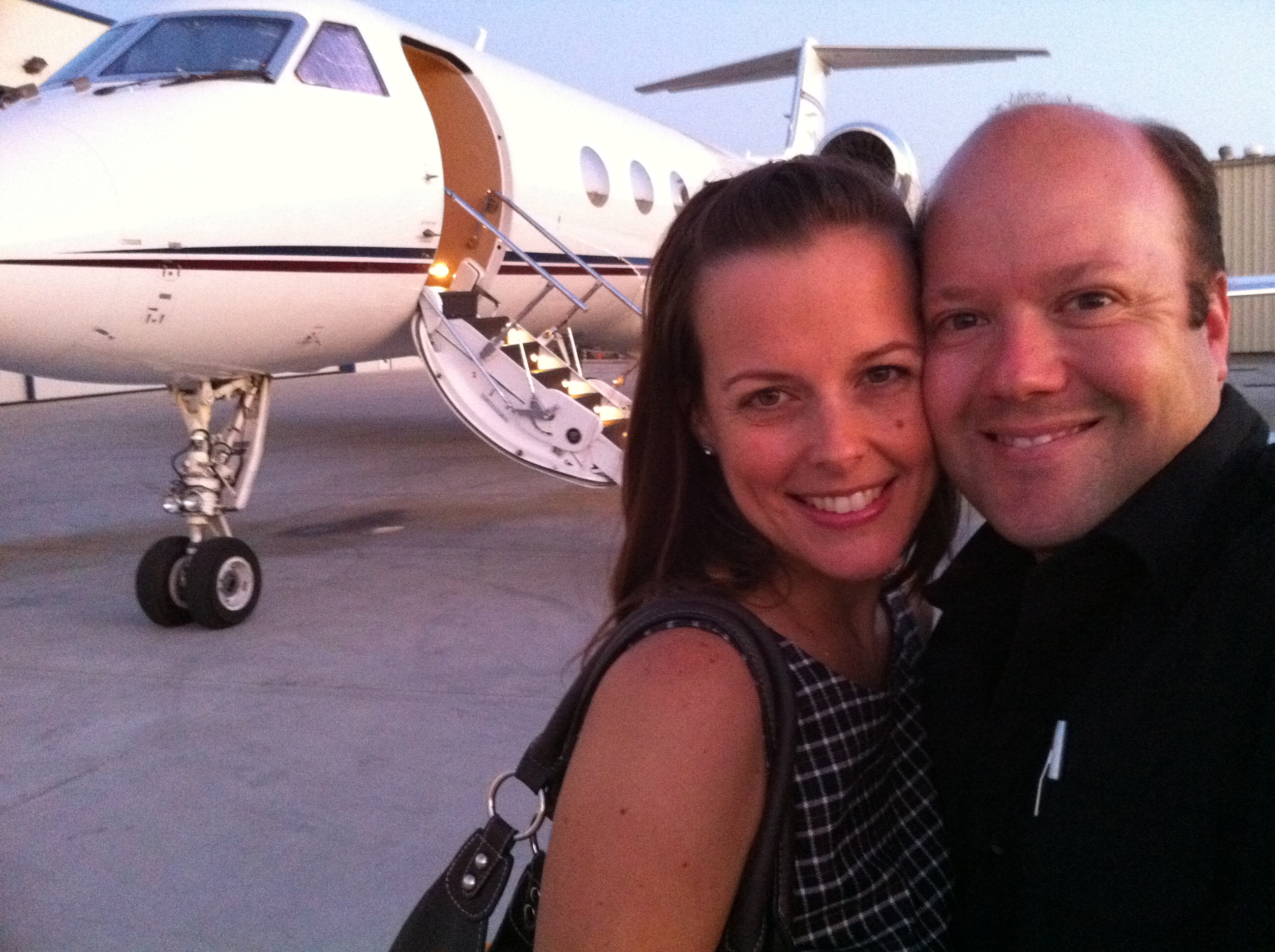
In some ways, it seems like a lifetime ago that this journey began. In others, I realize that there’s still so much to learn and experience that I’m (hopefully) closer to the beginning of this adventure than the end. Looking at the photos and re-reading log entries and blog posts constantly reminds me to appreciate and absorb every moment of the next decade just as I’ve done with the 15 years that have passed.
What a life it’s been — and God-willing, will continue to be.
This entry is part of an ongoing collaborative writing project entitled “Blogging in Formation”.

What a powerful story Ron! You have certainly had an interesting journey and you are far from done.
Brent
Thanks, Brent. Just when I think it can’t get any more interesting, something else comes along and proves me wrong. And speaking of coming along, I’m sure that the best is yet to come for our formation series!
Ron, this is a wonderful story. My heart broke for you as a little boy losing your parents. And then the world carried you on a different path. Sometimes we don’t pick life’s choices…but life picks us. You were destined to be in the sky. Thank you so much for sharing this fabulous story!
Glad you enjoyed it, Karlene! And you’re right, I think flying picked me. There’s no other way to explain how I made such a decision in a single second.
Wow, Ron. Great story! So sorry for the loss of your parents. But as you found out, the surprise quirks and turns of life lead us down the path that, looking back, seem like “Fate.” Like you, I’m a “ready-fire-aim” kinda guy, and I understand your seemingly instant decision to fly (which was probably processing and calculating for the past 10 years in your brain!)
You have a gorgeous wife, and a gorgeous life…don’t we owe so much to our aeronautical obsession!
We do indeed! I just read a post at Airplanology about pilot health, and it reminded me of how carefully I watch my own health due to aviation. Flying is the gift that just keeps giving. Which is good, because it takes a lot from the bank account. 🙂
PS—I’m jealous of your way cool “Indiana Jones” look! 😉
Ah yes — that’s from an engagement photo shoot my wife and I did back in 2009. Some of my favorite pictures! You can’t really tell, but it was 105 outside when that was taken, and I was wearing a heavy 3/4 length leather coat.
Ron, hey from down here in StPete FL. Great story. Thanks so much for sharing it with fellow aviators. I still regret calling you and hearing the words “already sold” when I wanted to buyTweety. I eventually got a nice Skylane so all ended well. Better yet is hearing your story and knowing it’s nowhere near ending. Fly safe friend.
Hello Jim! It would heve been great to sell Tweety to you. Of course, as they say everything happens for a reason. 🙂 I’m glad you found a sweet Skylane — probably the finest all around personal airplane ever built! I’m glad you enjoyed my story! Happy flying!
Awesome and inspirational story Ron. With your story being circulated and my advocating GA leading to professional pilots, together we can help the future of GA and career pilots. Kudos to you!
My story is I never stopped looking up at the skies when I heard an airplane. I still do that but spend more time now looking from the sky down. I also am fulfilling my dream of helicopter flying……from my house!
Dreams do come true! Fly safely my friend!
There are countless inspirational stories like yours out there just waiting to be told, and thankfully the Web makes it possible to share them with a wide audience! Funny you should mention looking up at airplanes, as one buzzed over my head just as I was reading your comment. I guess most aviators have that in common!
Rotary wing flying has been on my “to do” list for years, but all my helicopter funds keep magically disappearing into aerobatics. As they say on Twitter, #FirstWorldProblems. 🙂
Stay in touch — we’ll get GA back on track one way or another!
Ron – terrific story and well told, as always. It’s amazing how life can lay out a foundation for you, stone by stone, experience upon experience. It’s like being groomed by random events until you reach that perfect “right place/right time” moment when everything clicks, brakes are slammed, and you change direction in such a meaningful way. Very cool!
What a great story Ron. These are the kind of stories that we need to get out there. Not the guys who only view it as a job now. I cherish every chance I get to be in the air, which is not often enough courtesy of the budget cuts.
But it doesn’t matter if the last time I flew was two months ago, or yesterday, the next flight is always the one I cherish the most. Thanks for your story, and best of luck on your continued journey.
Hi Ron, what an amazing story. Would be a great true life movie. Call it destiny, call it fate, it’s often about seizing the moment. You are a great inspiiration